
Content
Welcome to the Club of Amsterdam Journal.
The Future Now Show about : The Corona Challenge with Elisabet Sahtouris
Have you noticed how well our Earth is doing with all us humans locked up? Can it be that this terrible time of human suffering is also a golden opportunity for human creativity in redesigning our way of life? Are the cleared skies a call to our cleared 2020 vision of a kinder, healthier, more peaceful and cooperative future? Dr. Elisabet Sahtouris is a leading edge evolution biologist, futurist, speaker and author known around the world for helping us lift our spirits to navigate through a Perfect Storm of Crises into a brighter future.
Elisabet’s latest book is Gaia’s Dance: The Story of Earth & Us.
Felix B Bopp
Founder & Chairman, Club of Amsterdam
Universal Peace Ambassador
Rewilding: lessons from the medieval Baltic crusades

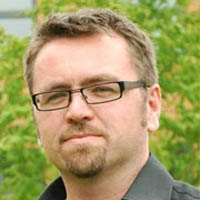
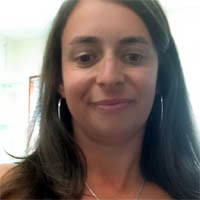
By Aleks Pluskowski, University of Reading; Alex Brown, University of Reading, and Rowena Banerjea, University of Reading
The Forest of Bialowieza, which straddles the border of Poland and Belarus, is unique in Europe: it is incredibly ancient. Woodland has been continuously present there for some 12,000 years. With the protection of 6059 hectares from human disturbance within the Polish national park, as well as the return of its iconic European bison herds from the brink of extinction, the forest is widely regarded as a model for restoring biodiversity or “rewilding”, which areas across Europe are trying to emulate.
Human memories are remarkably short – often only a generation or so. What we remember as “natural” landscape is often what we remember experiencing as a child. This makes conservation and landscape management particularly subject to “shifting baseline syndrome” – a psychological phenomenon which describes how each new generation accepts as natural or normal the situation in which it was raised. This means that significant time depth is rarely considered in future planning. But understanding environmental change, and planning for the future impact of our species, must include a long-term perspective.
There are ways around this. Archaeologists such as ourselves are uniquely placed to understand how fluctuations in human activity can affect the environment over much longer time periods. It is well known, for example, that our species’ mastery of farming enabled our populations to grow, with resulting deforestation and loss of biodiversity. This can be mapped through pollen coring, and the study of archaeological plant and animal remains. These techniques have become more precise in our lifetime, especially with advances in radiocarbon dating.
The reverse process can also be charted. Scanning of the rainforest in northern Guatemala indicated that entire Mayan cities and fields were recolonised by the jungle after being abandoned, along with large swaths of the Amazon Basin.
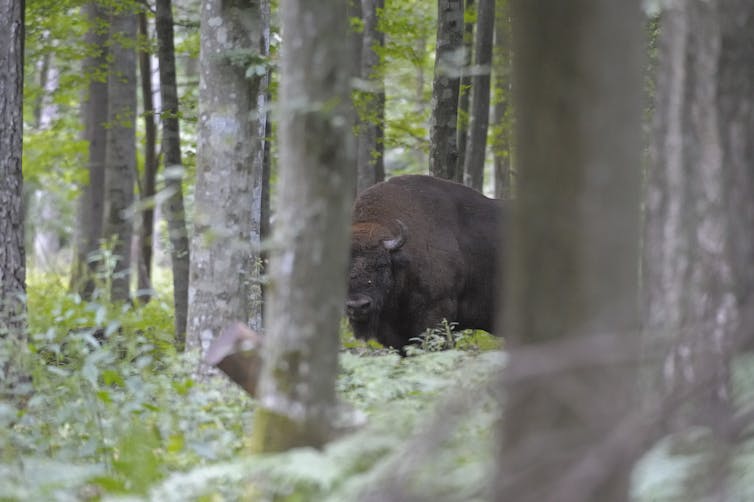
And, in Europe, the Forest of Bialowieza simulates the type of unplanned rewilding that took place just to its north over seven centuries ago as a result of the Baltic Crusades against pagan native populations. We used archaeological techniques to examine the long-term environmental impact of prolonged warfare and regime change as a result of these crusades, in order to better understand humanity’s longer-term effects on the environment.
Regime change
Previous knowledge of the ecological impact of regime change at this formative time was based on scattered and highly localised sources. Our project brought together the largest and most diverse dataset ever compiled for the historical period, drawing on archaeological, environmental and written sources, and comparing it across multiple countries.
From the end of the 12th century, the pagan tribal societies of the eastern Baltic (today Estonia, Latvia, western Lithuania, north-east Poland and the Russian Kaliningrad Oblast), became the targets of relentless crusades from the West. The conquered tribal territories were reorganised as Catholic polities called Livonia and Prussia and the native aristocracy was replaced by a theocracy, dominated by the Teutonic Order. They built impressive castles, the largest of which were effectively fortified monasteries.
The sustainability of the new regime depended on the exploitation of natural resources, particularly for food, fuel and building materials. To this end, the theocracy encouraged Catholic migrants from neighbouring German and Polish regions to settle the conquered territories.
Modern warfare has largely had a detrimental effect on wildlife, but the Baltic Crusades resulted in depopulated frontiers with Lithuania, which remained at war with the Teutonic Order for more than a century.
Here we found the pollen record showed a drop in human activity and reforestation. This became known as the “Great Wilderness”. Fragments are still visible today, particularly in north-eastern Poland. Written sources and animal bones recovered from frontier castles indicate diverse wildlife: it is here that the last wild European aurochs and bison took refuge. Noticeable human impact on vegetation in the Great Wilderness largely dates from the 17th century.
Migration
But if rewilding occurred on the frontier, the opposite trend occurred in the political heartlands of the new regime. After the crusades, the steady influx of migrants into newly built towns in Livonia and Prussia coincided with a noticeable expansion in cultivation.
In Prussia, this can be tracked in the pollen profiles across the region over time as later waves of migrants reached the frontier. In Livonia, where migrants were largely confined to towns and castles, the native population increased and established new settlements and fields. In both regions, the rural population supplied the growing towns with grain and meat, evident from the combination of archaeological animal and plant remains recovered from excavations. But pollen data, combined with a reexamination of the written sources, indicates that large tracts of woodland remained in populated areas, deliberately preserved as sources of timber, game and beeswax.
In the centuries preceding the Baltic Crusades, we can see there was already a noticeable human impact on the environment, coinciding with the rise of the Polish state in the 10th century and the emergence of a powerful native aristocracy across the eastern Baltic, ruling from strongholds. Populations grew, forests were cleared and replaced with cultivated fields.
The crusades halted this impact in some areas, and accelerated it in others – and, despite the rewilding of the frontier, continued the general trend in decreasing biodiversity.
Wildness today
Today’s substantial challenges for conservation are compounded by governments’ tendency to plan on a short-term basis. But in some places land is being left to rewild. Much of this has been unplanned, such as in the exclusion zone around Chernobyl, where wildlife has thrived in the 34 years of dramatically reduced human activity following the explosion, despite radioactive contamination of the soil and ground water.
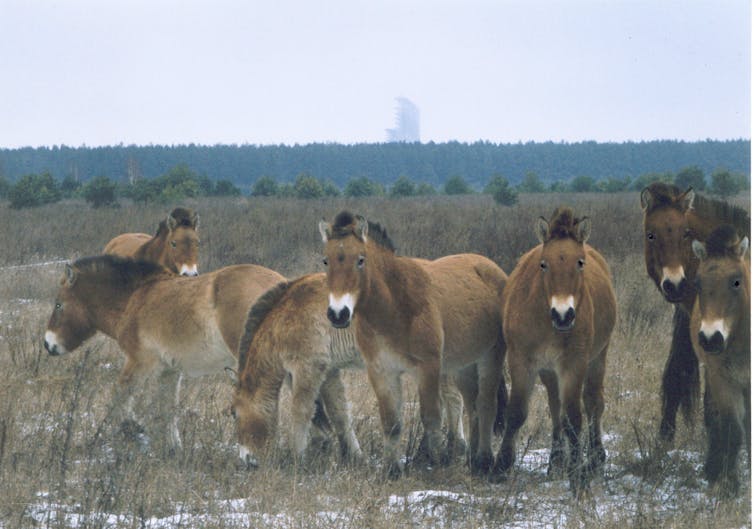
Xopc/Wikimedia CommonsCC BY-SA
There are also increasing calls for tracts of land to be set aside in a more planned effort to rewild. This is fantastic. But it is essential that planned increases in biodiversity include a much longer-term perspective of the varied impact of our species on the environment, drawing on and integrating the varied records of the past.
Digital Fabrication House
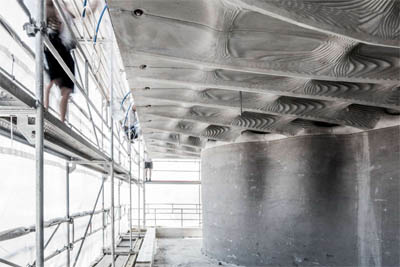
DFAB HOUSE
is a collaborative demonstrator of the Swiss National Centre of Competence in Research (NCCR) Digital Fabrication on the NEST building of Empa and Eawag. As part of the full-featured building project, researchers from eight ETH Zurich professorships have come together with industry experts and planning professionals in a unique way to explore and test how digital fabrication can change the way we design and build.
Digitalization has also become a part of architecture. In Zurich, architects, robotics experts, materials scientists, statisticians and sustainability specialists joined forces to develop new construction technologies.
360°-story DFAB House
The Future Now Show
Shape the future now, where near-future impact counts and visions and strategies for preferred futures start. – Club of Amsterdam
Do we rise above global challenges? Or do we succumb to them? The Future Now Show explores how we can shape our future now – where near-future impact counts. We showcase strategies and solutions that create futures that work.
Every month we roam through current events, discoveries, and challenges – sparking discussion about the connection between today and the futures we’re making – and what we need, from strategy to vision – to make the best ones.
June 2020
The Corona Challenge
with
Elisabet Sahtouris
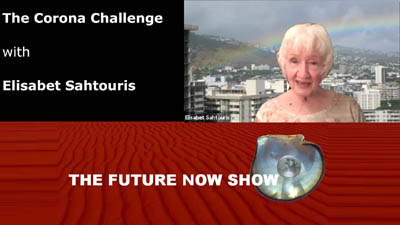
The Future Now Show
Credits
Dr. Elisabet Sahtouris, Holder of the Elisabet Sahtouris Chair in Living Economies at World Business Academy, Honolulu, Hawaii
chaminade.edu/academics/business/business-faculty
www.sahtouris.com
Piet Oudolf – the “emotion” of nature
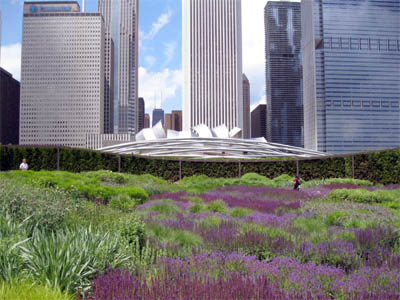
Lurie Garden in Millennium Park, Chicago, Illinois, USA
Piet Oudolf
is an influential Dutch garden designer, plant nursery man and author. He is a leading figure of the “New Perennial” movement — his designs and plant compositions using bold drifts of herbaceous perennials and grasses which are chosen at least as much for their structure as for their flower colour.
Design philosophy
Working primarily with perennial plant varieties, Oudolf practices a naturalistic approach to gardening. Taking a cue from architectural design, Oudolf prioritizes the seasonal life cycle of a plant over decorative considerations like flower or colour. He focuses primarily on structural characteristics, such as leaf or seed pod shape, present before and after a plant has flowered. He explains: “A garden is exciting for me when it looks good through the year, not just at one particular time. I want to go outside and for it to be interesting in all weather, in early spring and late autumn.”
The stability of perennials after planting are key to Oudolf’s designs, especially the use of long-lived clump-forming species. The result are gardens that persist in their planned state years after being planted with little deviation from Oudolf’s hand drawn maps.
Oudolf’s overall approach to planting has evolved since the 1980s when he and his wife Anja opened their nursery, at Hummelo, in Gelderland. His early work with perennials consisted of block-type groupings based on structure and texture. More recently Oudolf’s gardens has experimented with a variety of approaches, which, broadly speaking, are more naturalistic, often using blends of species. The change in style has been described as a shift from a painter’s perspective to one informed by ecology. It was first introduced into Oudolf’s public work in 2004 as part of the Lurie Garden in Chicago. The approach can be seen in the New York High Line project. – Wikipedia
How landscape designer Piet Oudolf captures nature’s ‘emotion’
News about the Future

is an open-source, comprehensive and transparent life cycle assessment tool for passenger cars. It allows for an economic and environmental evaluation of different types of cars under several driving and energy supply scenarios. Results partly rely on the background inventory data of ecoinvent v3.6, and the implementation of impact assessment methods therein.

Google drone delivery service
After being given the go-ahead to run a drone delivery service in Australia, Google has received approval from the Federal Aviation Administration to launch the service in the US too. The company, or rather its sister-firm Wing, has been granted the same certifications as smaller airlines to operate in the country.
This will result in its first drone delivery routes being opened in rural communities in Virginia in the next few months. “It’s an exciting moment for us to have earned the FAA’s approval to actually run a business with our technology,” said Wing’s CEO James Ryan Burgess, in an interview with Bloomberg.
Reimagining Life In The Cloud

By Frank Spencer
Global Futurist. Founder @ Kedge & The Futures School
Many are wondering what is in store for humanity after The Great Pause. Beyond asking “When?” Or “How?”, a better question may be, “Where will our futures take place?”
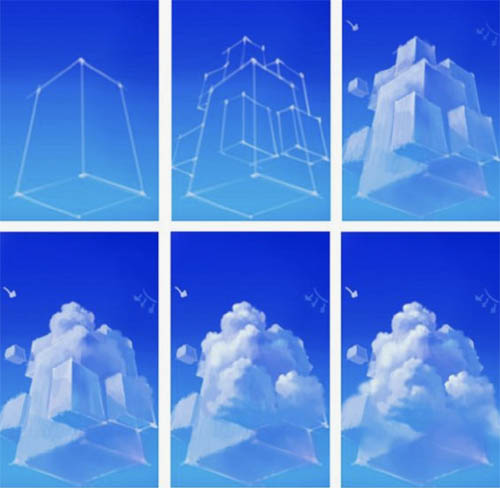
Only a few short years after the Internet humbly changed the world as we knew it in the late 1980s and early 1990s, researchers and social scientists were already speculating about the vast potential that could emerge from our newfound web of connectivity. In an article entitled “Rules For Radicals: Settling the Cyber Frontier,” Riel Miller, Head of Foresight and Futures Literacy at UNESCO, explored the ways in which the Internet might both alter and evolve how we define life as a species:
- Universal ‘cyber-citizenship’ or a means for affirming and controlling one’s existence — on-line identity, avatars and reputation — in the virtual worlds made accessible by the net
- Production systems without offices, factories and commuting
- Property right laws and payment systems that enable new business models based on tracked ‘credit for mash-ups’ and disintermediated ‘peer-to-peer’ transactions
- A universal ‘commons’ (open access and semantic web) for all human knowledge
- Ways of living that reduce the physical weight of human existence. (1)
Approximately 30 years later — and despite the fact that the Internet has become an integral part of our daily lives — we are still no closer to making this list of digital attributes a common reality for the majority of humanity. We have certainly seen e-commerce and social media alter the global zeitgeist, but these practices have arguably had more negative than positive impacts on the health of governance, economics and social cohesion. Instead of controlling our online identity, many people feel that their personal data has been misused by large corporations and political parties; virtual worlds as landscapes for transformative access to education and innovation are seen as playgrounds for those on the fringe; and, the transfer of physical activities into web-based platforms as a means to reducing our carbon footprint is still an afterthought.
It’s not as if many amazing individuals and groups haven’t been working on these ideas (and many more) over the past 30 years. Rather, we have yet to see the great need to shift our paradigms concerning the intentional development of virtual environments for humanity. Our long-standing (but also obsolete) system of short-term thinking and aversion to complex realities has created a mass deficit of imagination, and we have subsequently ignored the need to continually evolve humanity into these emerging landscapes. We’ve trained and educated almost no one to inhabit new worlds of thought and activity, and our collective potential still lies dormant — or worse yet, it is rapidly deteriorating. As Miller noted in a recent article, “Why do we think that the best strategy for our survival and well-being is to build heavy, imposing, rigid fortresses when we live in a swirling cloud?” (2), we have continued to stand by as the Internet has been hijacked by political and economic interests from an obsolete era, and very little has changed in the population at-large.
And then came COVID-19.
Suddenly, everyone has been thrust into the virtual world with little to no preparation or training. Teachers and parents are expected to educate our children online when the dynamics of the digital landscape are very different than the old-world systems with which we are familiar; the digital divide and lack of access to the Internet for large swaths of the population have thrown chaos into the face of our inequitable and non-resilient systems; organizations have scrambled to employ virtual platforms to save work as we know it; and, individuals have sought to leverage existing social media, e-commerce and collaboration websites to expand their presence into an exploding gig economy to take advantage of low-hanging fruit or stay afloat during the crisis. Coupled with a mounting list of civilizational threats such as climate change, growing inequality and a distrust of intellectualism, this pandemic is acting as an accelerant to reimagining life inside of Miller’s “swirling cloud”, but the great migration will require a much more purposeful, diligent and concerted effort if we are to see those clouds produce the much needed rain that can enrich the fertile ground of the web.
While speaking at The Long Now Foundation on the topic of “Six Easy Steps To Avert the Collapse of Civilization,” famed neuroscientist and bestselling author David Eagleman posited that
“We have accidentally invented a technology which I think obviates many of the threats that have caused previous civilizations to collapse… I think we are at a watershed moment in our history, and this may just be the thing that saves our future.” (3)
Among the many civilization-saving (as well as life-altering) capabilities that he assigned to the Internet, several ideas resound with unavoidable clarity:
- Ancient civilizations would often physically congregate during viral epidemics to demonstrate their compassion, solidarity and fortitude. Our relatively nascent science around viruses has revealed that this is the opposite of what we should do, but the need for social distancing and isolation while also connecting for civilizational advancement can be accomplished through the virtual nature of the Internet in practices such as telepresencing for work and social development, telemedicine for public healthcare, and digital tracking for optimal delivery of resources.
- Many inventions and discoveries were only echoes of well-established information from an earlier time. Sadly, the amnesia of history that is often a result of lost knowledge from conquered, colonized or collapsed civilizations has led to countless incidences of human suffering. (4) Unique throughout history, the Internet now allows us to discover something once, latch onto that idea, distribute it across the entire planet for others to learn from and expand upon, and ultimately — as well as quickly — create a redundancy that is immune to fires, floods and fevers.
- The dissemination of news needed by individuals and groups for both survival and innovation has traditionally been impeded by time, distance, topic discrimination and non-local media bias, but the web allows for a decentralization of “citizen journalists” who can spread relevant information across neighborhoods, regions and the globe in an on-demand and just-in-time network. The net allows us to generate an immediate response in the face of a crisis, both through digital communication and physical sensors that act as a planet-to-web interface. As Eagleman noted, “With advanced information networks, humans grow closer to omniscience and omnipresence.”
- Throughout history, tyranny has hobbled cultural progress. The Internet reinforces local information and nested feedback loops which “democratizes the flow of information by giving open access to everybody,” thus keeping governmental censorship and deception in check. More recently, we have seen despotic leaders use the Internet to divide populations or broadcast messages of fear and nationalism, but this only reinforces the fact that we must dive headlong into a global effort to create digital awareness, access and participatory citizenship as a means to frame the web for human development. (5)
- Crowdsourcing for increased innovation and transdisciplinary discovery has been touted for decades, but we have barely scratched the surface on the potential for open-sourced problem solving and opportunity emergence that is offered through a digital world. Research shows us that the development of human capital depends on open access to education, and this in turn results in greater economic ideation, invention and equity. Such widespread access and civilizational security depends on the maturation of the Internet and the promotion of a digital citizenry, opening the gates to education in a way that was never before possible.
- When society exceeds its carrying capacity in terms of energy, fighting ensues over limited resources. The web solves this problem by converting practices such as information storage or shopping for goods to the digital world, thus eliminating the need for paper trails, transportation redundancy and a myriad of other energy wasting activities. (6)
Indeed, Eagleman’s talk is timely — except it’s not. Interestingly, he gave this talk in 2010 — a full decade before the presently unfolding COVID-19 pandemic. The idea of creating a digital evolutionary platform that holds the potential to positively transform the human experience and aid in ecologically regenerative outcomes is not an idea whose time has come — it’s an idea that is long overdue.
In a 2017 paper entitled “The Body, Technology and Translation: Mapping the Complexity of Online Embodiment,” Seweryn Rudnicki addressed this unfolding exploration of the virtual human experience where body, identity, technology, reality and social constructs all intertwine. Speaking directly to our failure to keep pace with the ever-growing potential of a virtual world, he noted that, “Since the first decade of the 21st century, the Internet has become much more mobile, accessed in multiple channels, with numerous devices and used across a number of daily activities. It has also ceased to be commonly understood only as the World Wide Web accessible in browsers, becoming rather an infrastructure for a number of devices (from smartphones to cars) offering a vast number of services. For the sociological interest in the body, it is important that these changes have enabled new forms of interaction between physical bodies and Internet-related technologies, which can now be used not only to represent the body in specific virtual environments in the form of a picture, avatar or description, but also to offer a possibility to track, livestream and record a number of bodily parameters and activities. Yet the social theory of the body seems to be somewhat reluctant to respond to the challenges posed by the increasingly digitally saturated world.” (7)
Today, this infrastructure offers us a number of exciting ways for humanity to accelerate our great migration to the digital cloud:
- Simulate “Mirror Cities” for testing every aspect of physical development or social interaction in digital spaces.
- Virtual landscapes such as Magicverse, Decentraland and Fortnight that are redefining our traditional models of education, economic development, cultural sharing and entertainment.
- A “People Cloud” where passion and purpose can override “work as life” models, allowing individuals and groups to inhabit multiple projects simultaneously, and thereby increasing innovations and ideation for all of humanity.
- Digital Identities/ and Digital Citizenship that opens up new avenues to global connectivity, overcomes problems such as immigration and basic services for humanity, and dissolves the problems created by natural or national borders.
Multiple Avatar Personalities that empower each of us to truly explore a Post-Human world.
These ideas only scratch the surface of the possibilities that exist in a more intentionally designed and inhabited digital world, and ideas of how to best utilize life in the cloud — ideas that hold the potential to solve many of our existing wicked problems — are exponentially multiplying by the day. However, purposefully fostering a great human migration to the web may no longer be the plot of some Sci Fi movie, and the Internet has certainly grown beyond being an external technology that can be viewed as a luxury. Rather, our present time has given us the opportunity to create new life-giving metaphors for this virtual world, and we would be wise to foster a more deliberate transition to a blended and generative digital reality.
References
- Riel Miller: https://www.yumpu.com/en/document/read/43089928/rules-for-radicals-settling-the-cyber-frontier-riel-miller
- http://bayoakomolafe.net/project/out-of-the-ashes/
- http://longnow.org/seminars/02010/apr/01/six-easy-steps-avert-collapse-civilization/
- (ex. The forgotten practice of inoculations being practiced in 10th Century China that wasn’t re-discovered in Europe until after countless plagues, or the destruction of vast stores of invaluable manuscripts housed in The Great Library of Alexandria)
- (ex. Using cell phone data to report local vote tampering practices in real-time, or breaking through the firewall of fortress governments to deliver information to citizens cut off from the rest of the physical world)
- (Yes, a more immersive digital world with a greater full-time population would also require more energy, but the solution would lie in the development of green energy — something that needs to happen regardless.)
- https://journals.sagepub.com/doi/full/10.5153/sro.4322
Frank Spencer
Global Futurist. Founder @ Kedge & The Futures School — Global Foresight, Innovation & Strategic Design. www.kedgefutures.com
Recommended Book
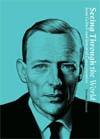
Seeing Through the World: Jean Gebser and Integral Consciousness
by Jeremy Johnson
Seeing Through the World introduces the reader to the work of German-Swiss philosopher, poet, and intellectual mystic Jean Gebser (1905-1973). Writing in the midcentury during a period of intense cultural transformation and crisis in Europe, Gebser intuited a series of mutational leaps in the history of human consciousness, the latest of which emerging was the “integral” structure, marked by the presence of time-freedom. Gebser’s insights on the phenomenology of human consciousness has brought profound intellectual depth and spiritual transmission to the field of integral philosophy and consciousness studies, influencing the works of American historians such as William Irwin Thompson and the philosopher Ken Wilber. Further syncretic corroboration links Gebser’s integral age to those of the Indian revolutionary and yogi Sri Aurobindo’s “integral yoga” and Pierre Teilhard de Chardin’s evolutionary mysticism.
Arguably, Gebser’s structures of consciousness are as significant an ontological insight as C. G. Jung’s “reality of the psyche.” Yet, until now, very little secondary literature has been available in the English-speaking world. Jeremy Johnson, the current president of the International Jean Gebser Society who has spent the last decade as an integral scholar and researcher, produces this introductory volume on the life and writings of Jean Gebser. Part companion piece to Gebser’s magnum opus, The Ever-Present Origin, part inspired treatise on an integral futurism, Jeremy guides the reader through the structures of consciousness and incepts integral scholarship as a divination that scries the age of ecological collapse and the ontological recodings of the Anthropocene.
It is the first volume in the NuraLogicals series, produced in partnership with Nura Learning.
Green Hydrogen : Can Australia lead the world?
By Just Have a Think
Green hydrogen, or renewable hydrogen, is now a very real commercial prospect thanks to the plummeting prices of wind and solar power. Australia’s vast land mass, almost constant sun and wind, and access to an array of minerals and resources really does make it the ideal location for large scale hydrogen production powered by renewable technologies. So can Australia move quickly enough to seize this opportunity?
Climate Change Success Story: ITER – Unlimited Energy
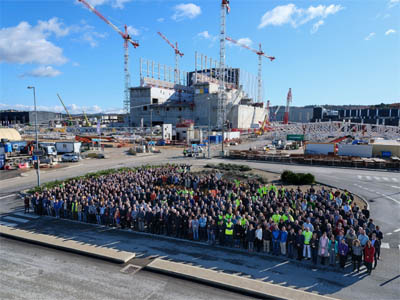
Staff photo, November 2019
When the 2017 staff photo was taken (in this very spot), the circular bioshield was still visible above the walls of the Tokamak Complex. Two years later, the bioshield is hidden in its concrete vault and the last elements of the roof structure are set to be posed. Against this spectacular backdrop, a portion of the 925 people currently employed as staff of the ITER Organization came out on 29 November 2019 for the traditional group photo. Photo: ITER Organization/Gérard Lesenechal – 29 November 2019
Fusion, the nuclear reaction that powers the Sun and the stars, is a potential source of safe, non-carbon emitting and virtually limitless energy. Harnessing fusion’s power is the goal of ITER, which has been designed as the key experimental step between today’s fusion research machines and tomorrow’s fusion power plants.
What is ITER?
ITER (“The Way” in Latin) is one of the most ambitious energy projects in the world today.
In southern France, 35 nations are collaborating to build the world’s largest tokamak, a magnetic fusion device that has been designed to prove the feasibility of fusion as a large-scale and carbon-free source of energy based on the same principle that powers our Sun and stars.
The experimental campaign that will be carried out at ITER is crucial to advancing fusion science and preparing the way for the fusion power plants of tomorrow.
ITER will be the first fusion device to produce net energy. ITER will be the first fusion device to maintain fusion for long periods of time. And ITER will be the first fusion device to test the integrated technologies, materials, and physics regimes necessary for the commercial production of fusion-based electricity.
Thousands of engineers and scientists have contributed to the design of ITER since the idea for an international joint experiment in fusion was first launched in 1985. The ITER Members — China, the European Union, India, Japan, Korea, Russia and the United States — are now engaged in a 35-year collaboration to build and operate the ITER experimental device, and together bring fusion to the point where a demonstration fusion reactor can be designed.
We invite you to explore the ITER website for more information on the science of ITER, the ITER international collaboration and the large-scale building project that is underway in Saint Paul-lez-Durance, southern France.
*Update 31 January 2020: The United Kingdom has formally withdrawn from the European Union and Euratom but has expressed strong interest in continuing to participate in the ITER Project. The terms of this new relationship will be negotiated during the transition period. Until a new arrangement is reached, the ITER Council has agreed that existing contracts, both with personnel and suppliers, will be honoured.
ITER Tokamak and plant systems, 2016
What will ITER do?
The amount of fusion energy a tokamak is capable of producing is a direct result of the number of fusion reactions taking place in its core. Scientists know that the larger the vessel, the larger the volume of the plasma … and therefore the greater the potential for fusion energy.
With ten times the plasma volume of the largest machine operating today, the ITER Tokamak will be a unique experimental tool, capable of longer plasmas and better confinement. The machine has been designed specifically to:
1) Produce 500 MW of fusion power
The world record for fusion power is held by the European tokamak JET. In 1997, JET produced 16 MW of fusion power from a total input heating power of 24 MW (Q=0.67). ITER is designed to produce a ten-fold return on energy (Q=10), or 500 MW of fusion power from 50 MW of input heating power. ITER will not capture the energy it produces as electricity, but — as first of all fusion experiments in history to produce net energy gain — it will prepare the way for the machine that can.
2) Demonstrate the integrated operation of technologies for a fusion power plant
ITER will bridge the gap between today’s smaller-scale experimental fusion devices and the demonstration fusion power plants of the future. Scientists will be able to study plasmas under conditions similar to those expected in a future power plant and test technologies such as heating, control, diagnostics, cryogenics and remote maintenance.
3) Achieve a deuterium-tritium plasma in which the reaction is sustained through internal heating
Fusion research today is at the threshold of exploring a “burning plasma” — one in which the heat from the fusion reaction is confined within the plasma efficiently enough for the reaction to be sustained for a long duration. Scientists are confident that the plasmas in ITER will not only produce much more fusion energy, but will remain stable for longer periods of time.
4) Test tritium breeding
One of the missions for the later stages of ITER operation is to demonstrate the feasibility of producing tritium within the vacuum vessel. The world supply of tritium (used with deuterium to fuel the fusion reaction) is not sufficient to cover the needs of future power plants. ITER will provide a unique opportunity to test mockup in-vessel tritium breeding blankets in a real fusion environment.
5) Demonstrate the safety characteristics of a fusion device
ITER achieved an important landmark in fusion history when, in 2012, the ITER Organization was licensed as a nuclear operator in France based on the rigorous and impartial examination of its safety files. One of the primary goals of ITER operation is to demonstrate the control of the plasma and the fusion reactions with negligible consequences to the environment.
Fusion in 30 years? ITER update [2020]
Nuclear Fusion: Revolutionary new breakthrough.
By Just Have a Think
Nuclear Fusion. That perennial promise of perpetual power. If it ever does actually come into reality then the energy needs of the human species will be met for ever with very small, very cheap, zero carbon emission power plants in towns and cities all over the world. But when will it arrive? Now an Australian company think they have the answer.
Futurist Portrait: Ramez Naam
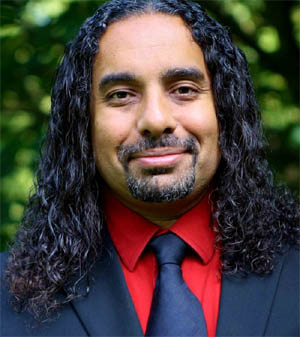
Ramez Naam
is a computer scientist; public speaker on energy, innovation, and disruption, cleantech angel investor; award-winning author of 5 books; and the co-Chair for Energy and Environment at Singularity University.
“I was born in Cairo, Egypt, and came to the US at the age of 3.
In my career, I first worked at Microsoft, working early versions of Microsoft Outlook, Internet Explorer, and the Bing search engine. Simultaneously, I founded and ran Apex NanoTechnologies, the world’s first company devoted entirely to software tools to accelerate molecular design.
I’ve written five books. Nexus, Crux, and Apex (near future science fiction), The Infinite Resource: The Power of Ideas on a Finite Planet (non-fiction), and More Than Human: Embracing the Promise of Biological Enhancement (non-fiction).
Now I focus my time on climate and energy, as a frequent public speaker on the inevitability and increasing price advantage of clean energy; and as an investor in and advisor to clean energy, mobility, and climate-related startups around the world.
In my personal life, I’ve climbed mountains, descended into icy crevasses, chased sharks through their native domain,
backpacked through remote corners of China, and ridden my bicycle down hundreds of miles of the Vietnam coast.”
Quotes
“Just as remarkably, and relevant for considering the future cost of solar, the decline of solar prices over the past decade has been faster than almost any credible forecast. Let’s add forecasts made by the International Energy Agency (IEA) in their 2010 World Energy Outlook, along with the forecast I made in 2011 at Scientific American. When we do, using dashed lines for the forecasts, we see that actual solar prices are well below those expected by the world’s most well-known energy analyst and forecaster (the IEA), and even below the most optimistic projections put forward a decade ago (mine).”
Exponential Energy | Ramez Naam | SingularityU Portugal Summit Cascais






Customer Reviews
Thanks for submitting your comment!